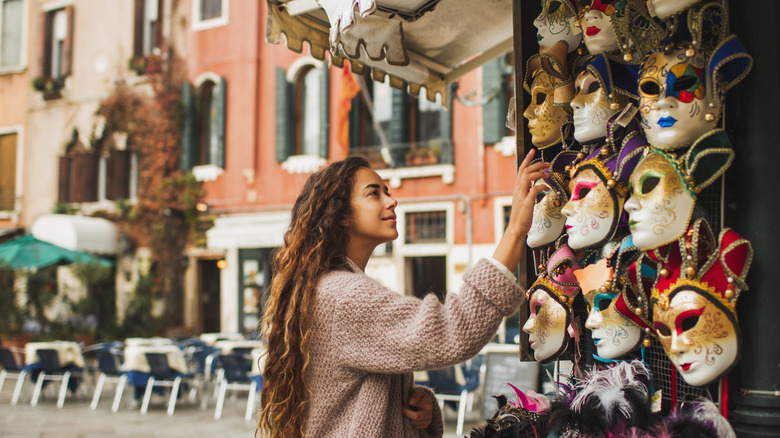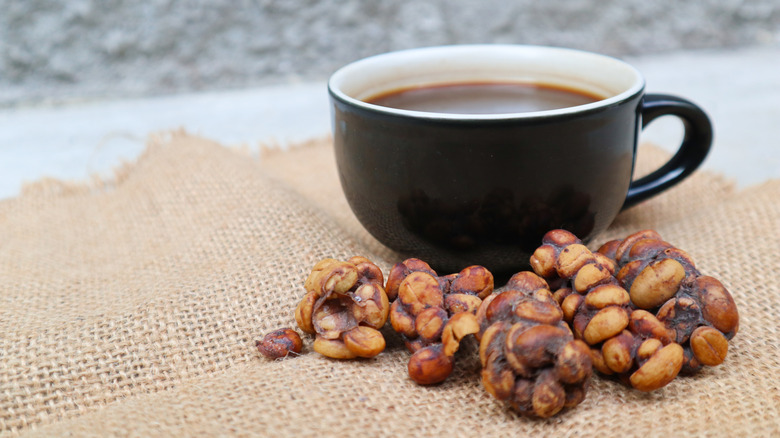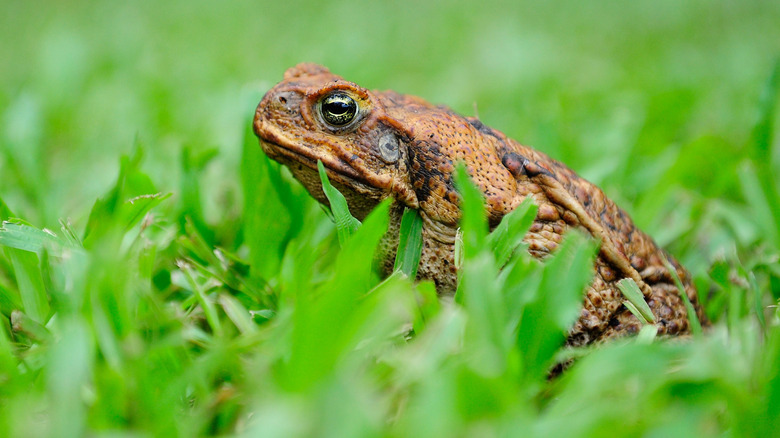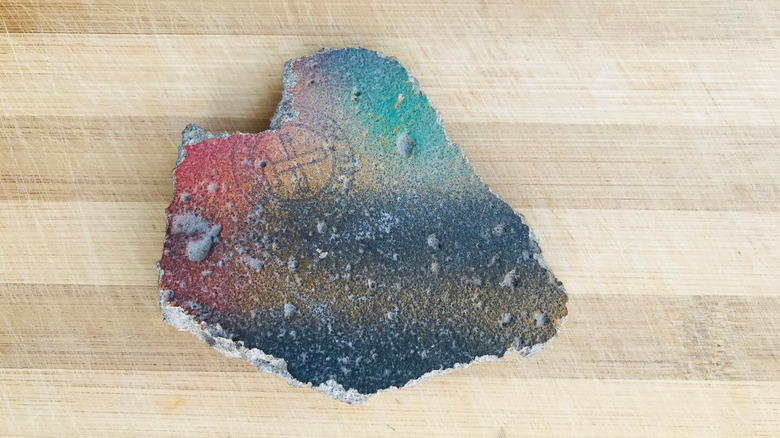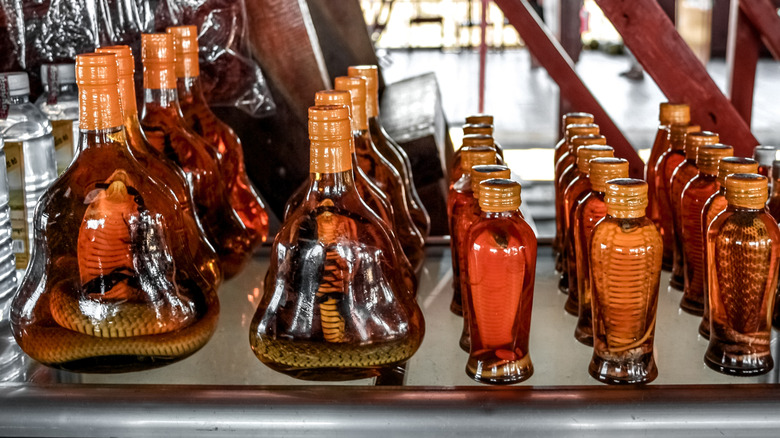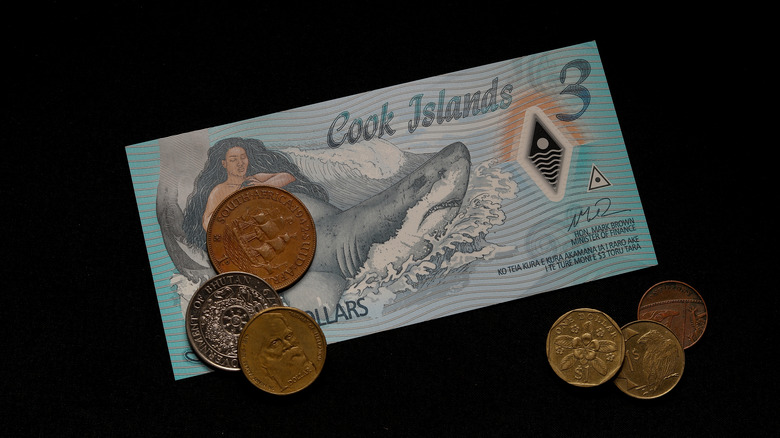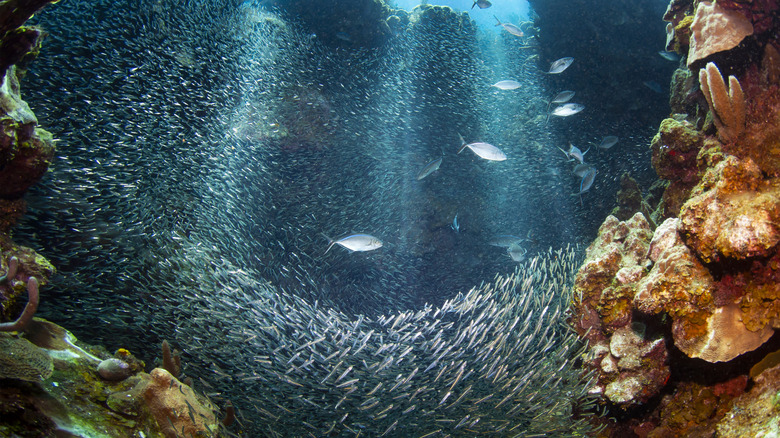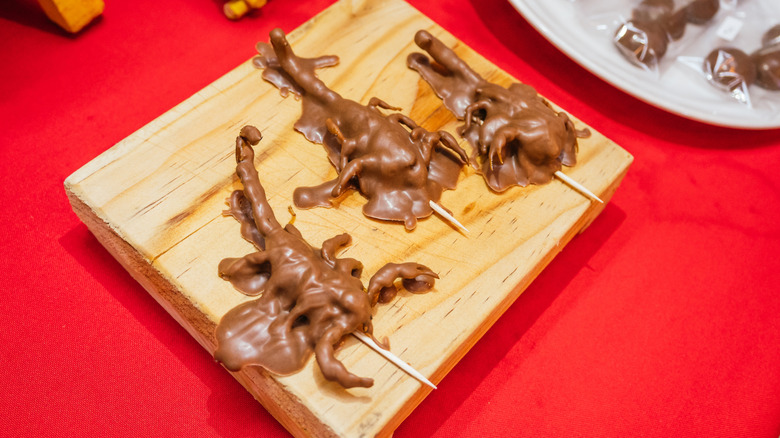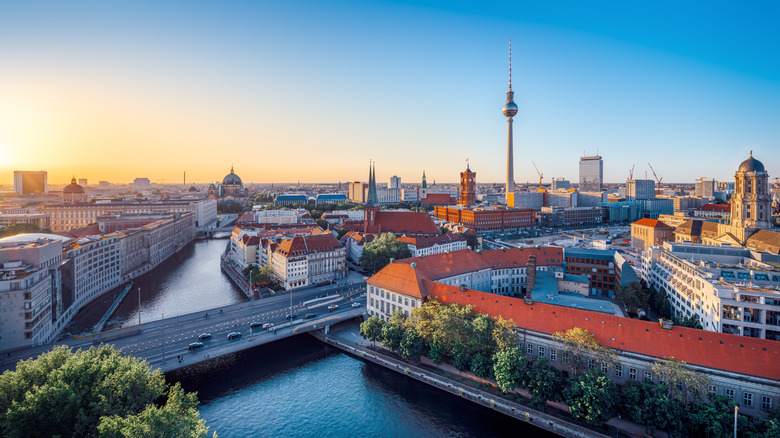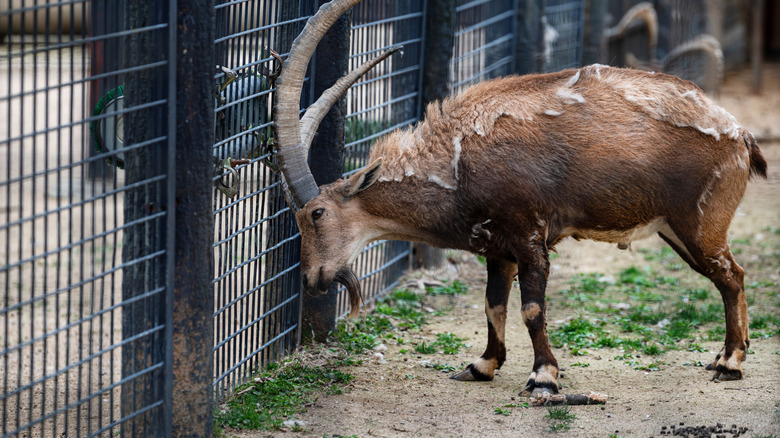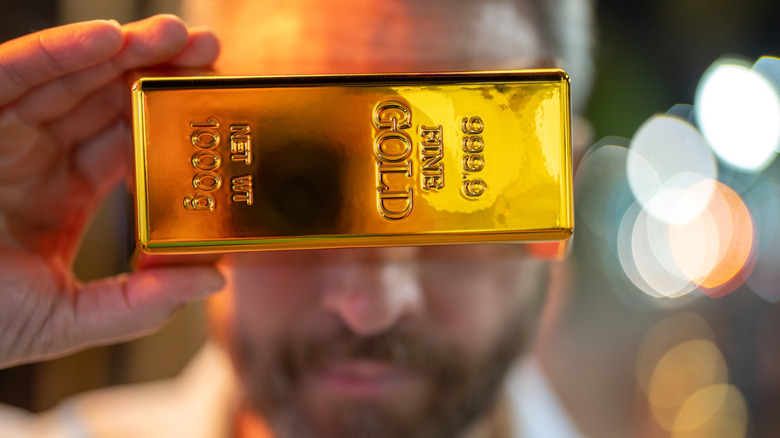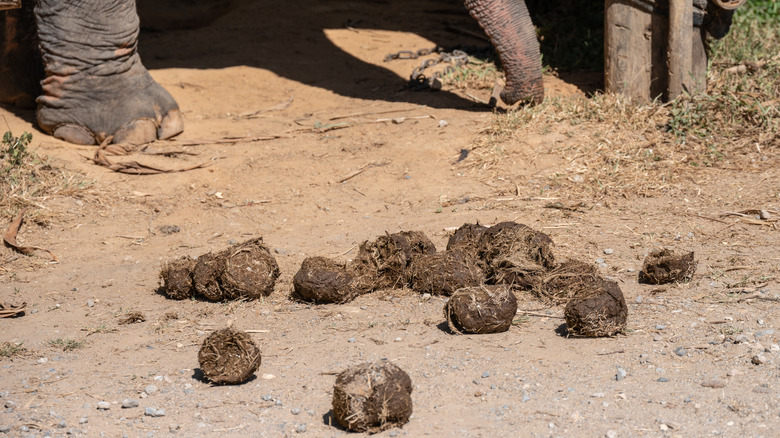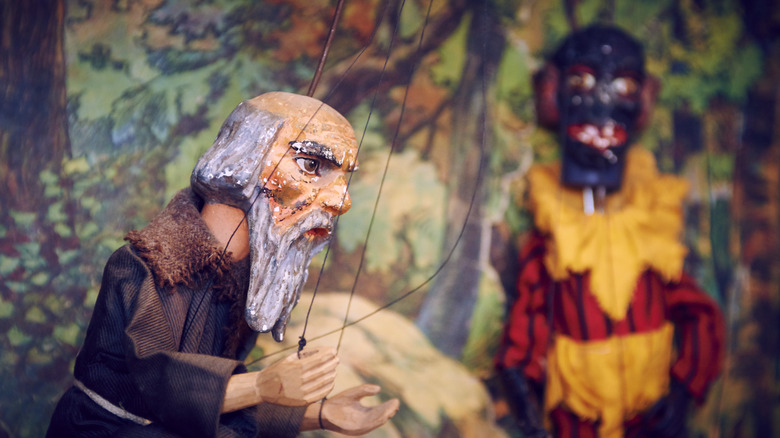The Most Bizarre Souvenirs From Around The World Tourists Actually Purchase
Over 4,000 years ago, during the reign of King Merenre, an Ancient Egyptian noble, Governor Harkhuf, took a trip to Sudan. He returned to Egypt with 300 donkeys saddled with ivory, incense, ebony, and leopard skins. These were the earliest known examples of souvenirs. In its Latin form, the word "souvenir" means to "come to mind."
In the days before photography, it was indeed the shortest path to a physical reminder of your travels. Still, while Instagram snaps and Facebook selfies might have replaced some of the need for such touchstones, the desire to bring back something of substance remains compelling. Indeed, the gifts and novelty market was worth around $100 billion in 2024 (according to Business Research Insights) and is expected to grow significantly over the next decade.
From budget-friendly keepsakes to literal tat and everything in between, the forms taken by souvenirs are as varied as the stars in the sky. In some cases, tourists pay over the odds for items of questionable lineage. In others, souvenirs drip with genuine meaning. But sometimes, more often than you might think, the items brought back from an overseas venture are just plain bizarre.
Animal dung coffee
According to the Corner Coffee Store, the most consumed beverage in the world is water. Tea comes second, and coffee trails a distant third, despite being America's favorite beverage. That last-place performance still amounts to some 400 billion cups of coffee downed annually (per Nescafé), and the industry is worth $470 billion in 2025 (via Statista). It's not for no reason, then, that coffee drinkers are spoiled for choice when it comes to how they enjoy their favorite beverage.
There are dark roasts, blonde roasts, frappes, and cappuccinos, blends that tantalize the taste buds, and endless debates over which region produces the finest beans. And then there's Kopi Luwak, an exotic and expensive coffee with a maturation process that can be a little off-putting to those of a mild constitution. The name does not refer to a type of coffee but rather a method of production.
Those who have spent some time exploring exotic islands in search of unique wildlife may have encountered the palm civet, a small mongoose-like mammal native to Southeast Asia. These small animals are natural scavengers and have a particular taste for the seeds of coffee plants despite being unable to digest them. The animal's dung is collected, the seeds are removed, washed, pounded, roasted, and then sold — at a premium — to coffee connoisseurs around the world. As expected, whole bags of the roasted beans are often picked up as souvenirs by scatologically minded tourists keen to intrigue friends and family back home.
Stuffed toads
Most people have some knowledge of human-caused natural disasters. The Dust Bowl of the 1930s, the Deepwater Horizon oil spill of 2010, and Chernobyl, to name a few. Australia, however, is uniquely suited to such ecological mishaps and has had to endure more than its fair share. Humans didn't arrive until around 50,000 years ago. Although their presence most assuredly upset the balance of the natural order, it was nothing compared to the arrival of Europeans tens of thousands of years later.
The introduction of rabbits to Australia's delicate equilibrium was the first mistake. Lacking natural predators, they bred like, well, rabbits, broke free, and began to devastate crops. In 1901, the government built a 1,200-mile rabbit-proof fence across the entire western stretch of the country to stop their spread. It didn't even slow them down.
Still, an even greater calamity was just around the corner. In 1935, in an effort to control pests devouring sugar cane plantations, Australia imported 101 cane toads from South America. By 2009, they had spread some 1,200 miles from the point of their initial release, leaving untold destruction in their wake. Apex predators dining on the toxin-laden amphibians quickly succumbed to the poison, watering holes became contaminated, and the toads ate anything in sight, leaving little left for the native fauna.
Stopping the spread of the cane toad is a national obsession in Australia. Citizens are encouraged to kill them on sight, and the cull has produced such a wealth of material that toad taxidermy has become a thriving business in some of the more intense cane toad hotspots. Prices vary, but tourists wishing to carry home a macabre example of the dangers of human meddling can do so for less than $50.
Pieces of the Berlin Wall
At the conclusion of the Second World War, Germany found itself split into two halves, one occupied by the Allied forces and the other by the Soviet Union. Deep in the heart of the communist occupied territory lay Berlin, also split into two sections, East and West. As time passed, the trickle of Berliners relocating from the Soviet occupied region had become something of a political embarrassment. In 1961, its leaders began construction of a wall that separated the city right down the middle. It remained in place until 1989.
In that year, as an East German official announced an easing of restrictions between the East and West, crowds gathered. Checkpoints were soon abandoned, and, at some point, Berliners began to tear the wall down to its very foundations. The symbolism of the fall of the wall still resonates today. It represented not only the physical removal of a barrier but also the reimagining of Germany as a whole, unified country. Such an observation was not lost on various groups of aspiring entrepreneurs who began saving whole slices of the former, 96-mile-long wall.
They squirreled away enough of the masonry that even today, visitors to the German capital can pick up a piece of the former symbol of European division, graffiti and all, for as little as $20 a pop. Whether the purchase is a piece of history or just another hunk of rock is very much in the eye of the beholder.
Snake wine
You could be forgiven for thinking that snake wine is some kind of aphorism — one derived from a local landmark or conjured from a metaphor of unfamiliar origin. Tourists in Asia who stumble upon this wide-ranging delicacy are immediately disabused of such notions. Inside each bottle of snake wine is a whole, pickled snake. Usually a venomous one at that. While we're here, check out the best places to visit in Southeast Asia.
The Chinese have been producing snake wine since at least 771 BCE, citing medicinal benefits that covered a whole range of conditions. Ratios are important when it comes to the preparation of this beverage. An alcohol concentration of 50% is required to neutralize the snake's venom and make the wine safe to drink. For this reason, rice wine is often used, and the snake is marinated for at least two weeks before being sold to customers. Versions of snake wine sans pickled serpent also exist. Such concoctions involve mixing the blood and bile of the snake with the actual liquor, creating, if anything, an even more intimidating beverage. Still, while not for the faint-hearted, bottles of snake wine are a common sight in the markets of China, Cambodia, and Vietnam and are often bought as ornaments as opposed to potential beverages.
Three dollar bills
One of the first rules of spotting counterfeit money is that you need to possess an intimate knowledge of the currency in question. For those not in the know, the United States does not produce a three-dollar bill. That honor belongs to the Cook Islands, an archipelago spread across 770,000 square miles of the South Pacific Ocean. Humans began the gradual process of colonizing the Cook Islands around 1,500 BCE. Europeans arrived almost 3,000 years later with occasional stopovers during the late 1500s, followed by more extensive exploration by British explorer Captain Cook in 1773. Today, the 15 atolls and islands — all of which are the tops of long-extinct volcanoes — exist as a unified self-governing nation with close affiliation to its largest neighbor, New Zealand.
The Ministry of Finance issued the world's first, and only, three-dollar bill back in 1992. Whether intentionally created for such a purpose or not, the sheer novelty of the denomination made it something of a hit with visitors to the island chain. Featuring printed elements from across the region, including a Blue Lorikeet, traditional dancers, and a map of the Aitutaki atoll, the bill is as colorful as it is novel. As such, it makes for a poignant, if at times comical, memento.
Deep sea water
For most of us, tap water is, of course, completely safe to drink. Exceptions to this rule, however, tend to crop up in predictable and unpredictable locations. Drinking the local water in India is, for example, a definite no-no and just one of the health risks you should be aware of when planning a visit. Similarly, there are parts of Europe where bottled water is a much safer bet than a twist of a faucet. Thankfully, in such places, the availability of off-the-shelf water is fairly ubiquitous and generally falls into two distinct categories: affordable and, somewhat pretentiously, not so.
Selling pure spring water at a premium is not as modern a phenomenon as you might think — the bottling plant at Melvern Springs in the U.K. has, for example, been hawking its wares since 1622. Still, the concept of selling water at over $1,000 per liter is most assuredly a modern reality. Although such super-premium products are rare, they are perhaps not as scarce as your financial advisor would like them to be. Deep-sea water, thankfully, won't set you back quite so much. For the low price of $24, you can take home a section of the ocean that has been pumped from the waters surrounding Hawaii. Water from that depth is entirely uncontaminated by humanity and so cold that not even bacteria can survive. Once desalinated, the finished product is rich in minerals and electrolytes and tastes, well, like water, really.
Chocolate scorpions
High protein diets have surged into the spotlight of late, with fads suggesting that varying amounts of meat, fish, cheese, eggs, and nuts form the bulk of your calorific intake. And whilst some dieticians suggest that protein should only account for around a quarter of your daily consumption, all agree that a protein-rich diet is essential to human health. A shame, then, that protein is becoming increasingly difficult to get hold of.
Protein can be derived from animal and vegetable sources, but animal protein offers more bang for your buck thanks to its higher concentrations of amino acids. However, the rearing of livestock has been linked to a number of environmental problems, including deforestation, loss of soil carbon, and global warming. As governments race to tackle such issues, the supply of animal protein gets squeezed, creating food insecurity. Thankfully, there is a solution to the problem. Insects, it turns out, are made of protein.
The consumption of insects is nothing new; humans have been doing it throughout their existence. The soil beneath our feet is crawling with an entire smorgasbord of edible treats. Indeed, there are almost 200 million metric tons of arthropods alone that could act as a substitute for any number of meals, ranging from a bacon sandwich to a full Sunday roast. Still, while plans to introduce insect protein into Western diets are still in an embryonic phase, there are places where such things have been commonplace for quite some time. Skewered insects are available on every street corner in China, but don't travel well enough to be considered souvenirs. In Thailand, however, chocolate-covered scorpions certainly qualify. Perfectly safe to eat, such delights involve roasting the scorpion whole, dipping it in chocolate, and then serving it as is.
Canned air
Canned air has long existed as one of those gag gifts with global appeal. The concept is not dissimilar to the idea of picking up a stone from the beach to take a piece of your vacation home with you. From an entrepreneurial perspective, it makes sense; you are, after all, essentially selling air.
All that is required is to first design and then produce the cans. Next, you need to allow pressure differences and the tendency of gases to occupy spaces to fill said cans with a whiff of the local atmosphere. Lastly, you have to seal in the goodness, distribute the product to tourist hotspots, and wait for the profits to flow. Canned air comes in a nearly unlimited number of flavors. You'll find them on a tour of the best museums to visit in London, on solo explorations of Berlin, stacked up inside a New York bodega, or pretty much anywhere else you can think of that has been inundated with tourists.
Bezoar stones
As far as we know, humans have coveted the magical healing properties of Bezoar stones since at least the eighth century. Of course, the use of the word "stone," is a misnomer here. While the name "Bezoar" stems from the Persian word for "antidote," the stone moniker is derived from its appearance alone. To be clear, a bezoar stone is not made of rock.
These popular tourist items found on sale across China, India, and parts of the Middle East are, in reality, little more than polished lumps of hardened, undigested material taken from the stomach of an animal. The animal in question is usually a goat. However, variations on the format do occur, and the stone itself was once widely used as an antidote to arsenic poison and a charm to ward off plague. Ostensible pebbles were often carried in intricate cases, although these days they are usually sold as small stones of varying shapes and sizes.
Solid gold
There are a few things more precious than gold. Rhodium holds the title of the world's most expensive metal. It is mostly used to reduce harmful emissions in automobiles or as a coating in certain high-end jewelry. Other contenders for the crown include osmium, which is used for surgical implants; iridium finds use in electrical contacts, and palladium is an essential component of a myriad of electrical equipment. Still, in terms of symbolism and security, few things shine quite like gold.
The ancient Egyptians were the first to see the value of gold. They began smelting it circa 3,600 BCE, and some 3,000 years later, in Lydia, an ancient kingdom located in what is now modern-day Turkey, began minting gold coins. During the mid-19th century, even rumors of gold could spark mass migrations as prospectors traveled across the globe in search of fortune.
Today, gold is mined on an industrial scale and is often considered a safe investment during times of financial crisis. And where better to pick up an unusually expensive souvenir than a country that exudes excess from every street corner? Bars on sale in the United Arab Emirates start at around $1,700 or so for a half-ounce bar. Meanwhile, a 10-ounce stamped bar can fetch as much as $34,000. Prices fluctuate with the market, and care must be taken when transporting such high-value items through customs. Most countries place limits on how much capital you can bring with you, and in the case of gold, you should always declare it when traveling through ports of entry.
Elephant poop
As a rule, it's not the best idea to wander around collecting animal droppings to impress friends back home. Biohazards aside, most countries have laws that protect against cross-contamination of species, and carrying a product potentially alive with non-native fauna is a definite no-no. Still, there are certain types of dung that have uses beyond mere fertilizer. Elephant poop is one of them.
Naturally high in fiber, the droppings left by wandering pachyderms just so happen to make excellent paper. From that one simple truth, 1001 items have been born. Visitors to some parts of Africa often find decorated notebooks, birthday cards, craft items, and works of art all constructed from 100% sanitized poop. Poopoopaper is an example of an eco-friendly company selling these unique and environmentally friendly gifts. So, the next time you plan a luxury safari to Tanzania, it's good to know that you can leave droppings you find lying around safe in the knowledge that the local souvenir shop probably has you covered.
Devil dolls
Nestled in the heart of medieval Europe lay the tiny kingdom of Bohemia. Its name is derived from the Celtic tribe known as the Boi, who first settled in the region. However, by the sixth century, it was dominated by Slavic Czechs. From its capital city of Prague, Bohemia weathered the ebbs and flows of history, at times rising to prominence and at others falling victim to the machinations of its larger neighbors. And through it all, the nation now known as the Czech Republic maintained its reputation as a center of learning and cultural excellence.
Indeed, it is not for no reason that the Czech Republic is one of the most visited countries on the planet. The city maintains its medieval splendor, and tourists looking to spend a few dollars on a distinctive souvenir are well served via a cornucopia of traditional arts and crafts handed down from past centuries. Take the devil dolls, for example.
Puppet shows had been fashionable in Bohemia since the nation's inception, but a particular style of puppetry gained prominence during the 17th century. Biblical plays, English tragedies, and Italian comedies were especially popular, and the craftsmanship that went into the design of the puppets was unquestionably world-class. Today, marionettes are on sale across the capital, many of which are still made using traditional materials and methods. The most popular of these — the so-called devil puppets — range from comical caricatures of modern design to genuine antique grotesques.
